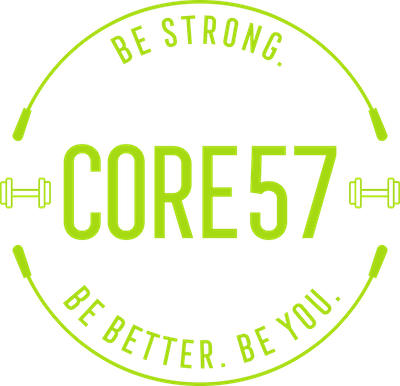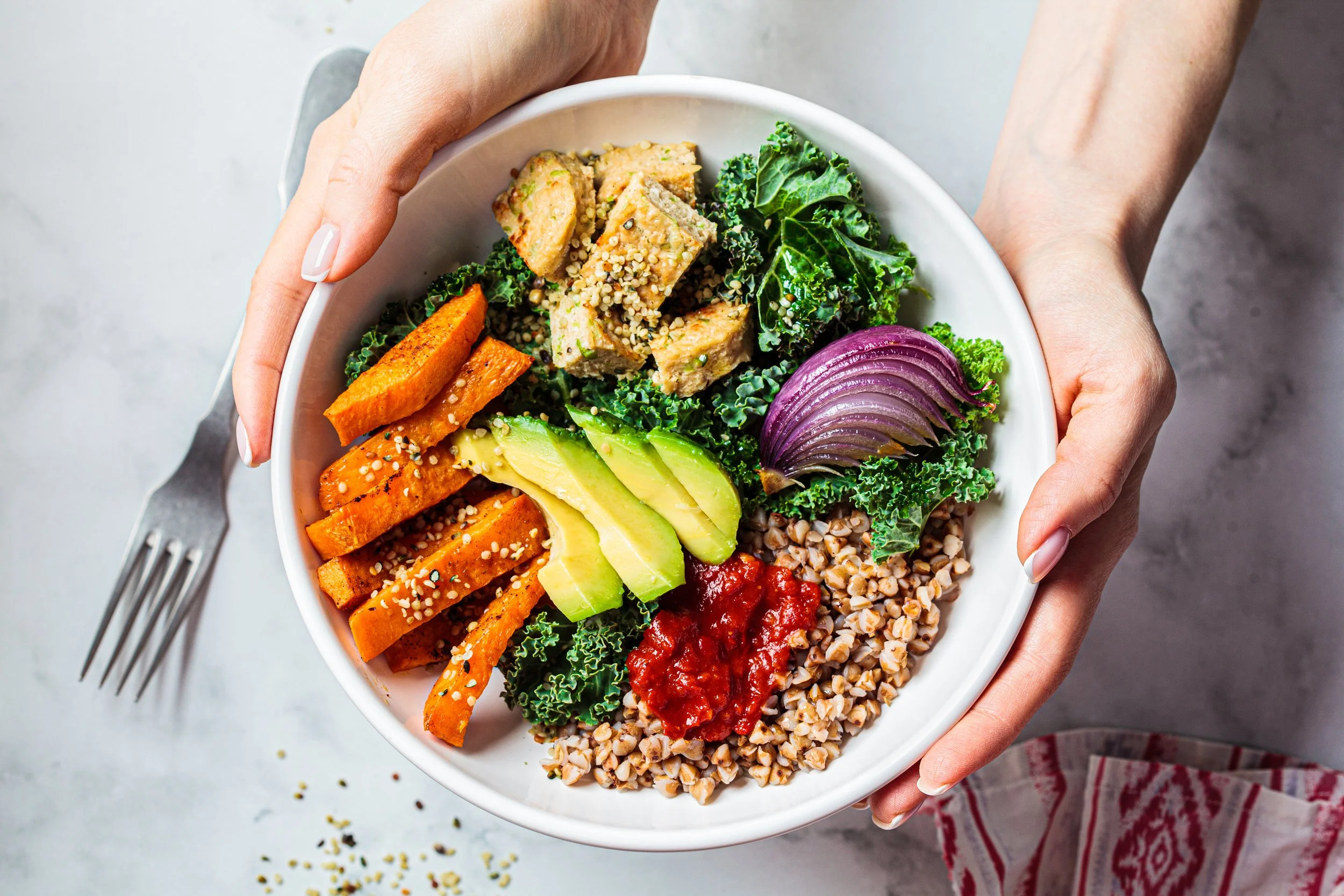Balance your Hormones and Lower Inflammation by creating Blood Sugar Stabilizing Meals
If you are entering the mid-life stage and it’s left you feeling like, all of a sudden, you no longer have the same control you once had over your body- you are NOT alone.
At CORE57, we specialize in creating individualized training and nutrition programs for this exact phase of life. We wanted to share some of our favorite insights and tips about how you can use nutrition tactics to help balance your hormones AND regain a little more of that control along the way!
Blood Sugar and Hormones
One of the key steps to helping balance your hormones is to focus on efforts that will help you have a nice steady, controlled blood glucose throughout your day. Building meals that help create a balanced blood sugar is paramount to optimizing hormones and can help in lowering inflammation.
The extreme ups and downs in blood glucose are very stressful to your body and can increase production of stress hormones such as cortisol, which can lead to a cascade of other unfavorable hormonal shifts across your body’s metabolic systems, leading to body fat accumulation!
Meal Planning for Improved Hormones
If your breakfast of choice is carbs alone or coffee, you have started your day by climbing the blood sugar rollercoaster, and will likely be facing a “crash” later in the day. You want to focus on building meals that will help level your blood sugar and hormones and set you up for success throughout the day. If you usually skip breakfast, keep reading for some quick and easy options that will also help you keep that blood sugar on track!
There are a couple of different ways we can conceptualize how to achieve a balanced meal.
The Law of 3’s
When you’re thinking about what to include in your next meal, your most important categories are proteins, fibrous carbs, and healthy fats.
Proteins
At each meal, you want to prioritize protein, about 25-30 grams (a generous palm) for women, 35-45 grams for men (2 palms).
Eating this first will jump-start the satiety signals being sent to your brain!
Fiber
Fiber is incredibly important for slowing the rise in blood sugar that happens when we consume food, for bowel regularity, and gut health as well as healthy cholesterol levels. Your best fiber sources are going to be produce!
Go as heavy as possible on veggies and lower sugar fruits such as berries and apples. Whole grains, high fiber/low carb wraps and legumes are also great fiber sources.
Nutrition Pro Tip: Throughout all our nutrition coaching work with clients, this is the area that EVERYONE has room to improve upon. So focus on eating more produce at every single meal.
Healthy Fats
Healthy fats help to blunt blood sugar spikes, and are necessary for hormone production and absorption of fat soluble vitamins.
Let’s face it, fat makes food taste better too, which can help with satiety as well It’s just important to recognize that fat adds up QUICKLY and we need to be mindful of how much we are taking in.
Fat sources are things like oils and salad dressings, hummus, mayo, butter, avocado, nuts and nut butter, seeds, cheese, chocolate, red meat, fatty fish like salmon, and egg yolks. Also remember that processed foods like crackers, chips, cookies, granolas, and baked goods are sources of fat as well.
Try to limit the number of sources to 1 or 2 per meal, as fat should be more like a flavor enhancer, rather than a main component.
Start your day strong with these blood sugar-balancing breakfast options
Avoid that dreaded mid-day slump and blood sugar crash by starting off your day with the right breakfast options. Research from the Endocrine Society actually shows that eating breakfast before 8:30 a.m. can help to improve blood sugar and insulin resistance.
If you don’t have time to prepare a full breakfast in the morning we get it - try these super simple options to kickstart your metabolism and set your blood sugar on a steady course for the day.
Greek yogurt and berries
Protein smoothies (with some greens mixed in!)
Veggie omelet, hold the cheese, or use a combination of whole eggs and extra whites or egg substitute
Avocado toast with 2% cottage cheese or even ham, skip the egg yolk since your fat comes from avocado here
If you read that list and thought “I am not a breakfast person” give these tips a try:
Make it easy- consider quick and easy grab-and-go options like protein bars or smoothies
Mix it up - if you don’t like breakfast food, create a meal you DO want to eat, based on the law of 3’s we outlined
Pack a punch - you don’t have to eat a huge breakfast to get in your protein and fiber source. Find protein bars or smoothies that can be smaller in size but are packed with nutrients and ingredients that will fuel and sustain you until your next meal.
Balance your plate, balance your blood sugar
If you don’t know where to start when it comes to fighting those dreaded hormone changes and their impacts on your body, remember: balancing your blood sugar is as simple as balancing your plate!
At each meal, aim to be protein and produce forward, with some healthy fat sprinkled in. Your fiber will come from your veggies and fruit first, as well as starchy carb choices, the best of which we mentioned above!
If you’re looking for additional guidance to help you understand how to eat to optimize your hormones, we are here to help you! Simply put, we can not resort to starvation diets and running ourselves into the ground in the gym to see results at this stage of life! It’s all about building smart, personalized plans that are optimized for your health and wellness goals - and focusing on balanced blood sugar is a great place to start.
Get in touch with our nutrition experts today.

